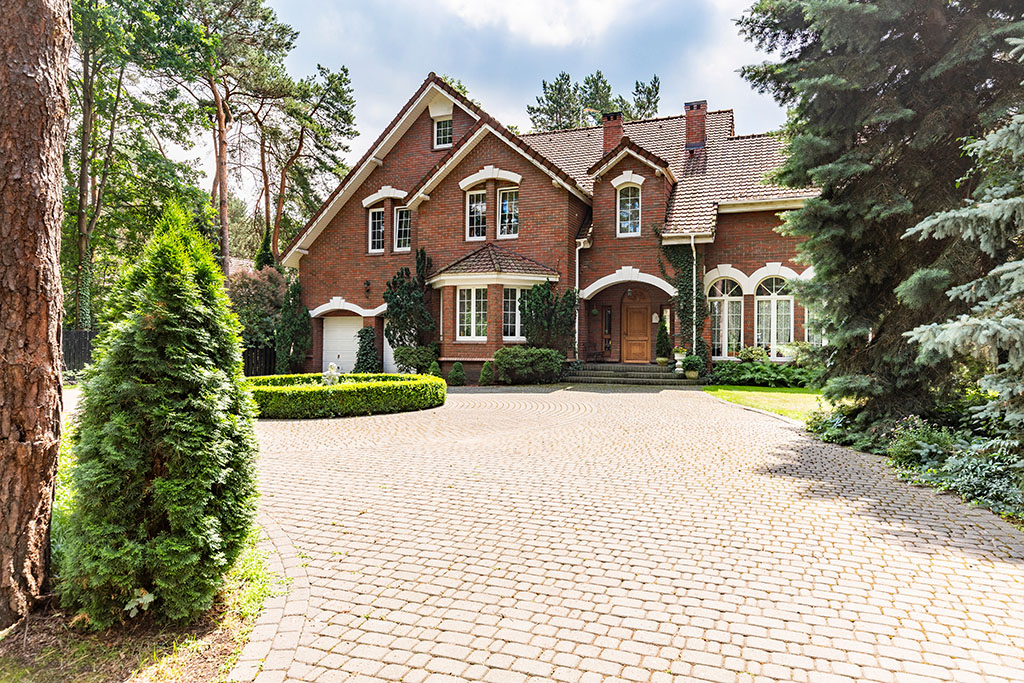What Are 5 Ways to Defer Taxes on Highly Appreciated Real Estate?

By Stefan Dunkelgrun, Partner
Recently, home prices have been increasing and many people believe now is the time to cash in on the value of their home. Whether it’s downsizing and taking the difference or selling a second home and using that money to fund a retirement, most people would agree that they prefer not having the government taking a big bite out of their profit.
But what are the tax consequences, and what can be done to make it simpler?
HOW DOES TAX ON THE SALE OF REAL ESTATE WORK?
Generally speaking, any profits on an investment are taxed.
Therefore, if purchasing vacant land (real property) for $40,000 (the Basis) and selling it the following year for $50,000 (the amount Realized), the $10,000 profit (Capital Gains) is the amount that will be taxed.
WHAT IS A BASIS PRICE?
Basis is the price that you paid. Continuing with the example of vacant land, it’s the price paid for the land—pretty straightforward. It’s also possible to count some of the costs associated with the closing toward your basis, but not all.
In most cases, legal fees, transfer taxes, and other costs directly related to the purchase will count. Mortgage fees, homeowner’s insurance, and other indirect costs, on the other hand, are not. For home purchases, the basis can be more complicated. Certain improvements, like a new roof or a garage addition, can be included, but ordinary repairs and regular maintenance are generally not included. Likewise, some items may need to be deducted from your basis, such as hurricane or flood damage (casualty losses) that you may have claimed on tax returns.
In essence, the basis is the cost of buying the home, plus any monies paid towards improvements, minus any deductions or losses that may have already been claimed.
WHAT IS THE AMOUNT REALIZED?
In order to calculate your capital gains, your basis is deducted from the amount you Realized.
But how is the amount Realized calculated? Simply put, the amount Realized is basically the property sale price—including the value of the mortgage paid off—minus any selling expenses. If you sold your home for $500,000, but had a $300,000 mortgage and 5% realtor closing fees ($25,000), the amount Realized is $475,000 even though you received only $175,000 in cash.

HOW MUCH DO I HAVE TO PAY IN TAXES?
The amount of taxes owed depends on different factors.
If you purchased land for $40,000 and sold it for $50,000, your capital gains are $10,000. If you sold a home, it gets more complicated. But basic
ally, your capital gains are what you sold the home for, minus what you paid for the home and how much you invested into it.
Not all capital gains are created equal, however. Assets owned for more than 1 year (long term capital gains) are taxed less than assets owned for less than 1 year (short term capital gains). Homeowners will incur a lower tax rate than house-flippers, for example, because flipping houses is considered a profession and those short-term capital gains will be considered ordinary income. Tax rates on long term capital gains are lower, as they are used to incentivize long-term homeownership, among other reasons.
Since tax is applied to profits, not entire sale prices, short-term homeowners (less than 1 year) will pay at the regular income tax rate.
Typically, homeowners pay a long-term capital gains tax of 15%. Homeowners with higher taxable income ($459,750 for a single filer or $517,200 for married couples) have to pay a higher taxable income rate of 20%.
Additionally, there are different rules when selling your primary residence, where you must have lived for at least 2 of the last 5 years. If you’re single, you don’t have to pay taxes on the first $250,000, if you’re a married couple, you don’t have to pay taxes on the first $500,000. For example, if a married couple bought their primary residence for $300,000 and later sold it for $1,000,000, they would only have to pay taxes on $200,000 out of $700,000 of capital gains.
The profits for an average homeowner selling their home in 2021 were less than $100,000. In Lee County, the median home selling price was $416,000 – therefore, the majority of people selling their homes didn’t need to pay taxes at all, as half of the homes sold in the county sold for under the $500,000 exclusionary limit.

IS ALL THAT TAX REQUIRED?
Again, it depends.
Although typically, people don’t need to pay the capital gains tax, those who do stand to lose out on big chunks of their profits. If a house sold for $100,000 in 1980 and sold again today for $1.1 million, the capital gains tax would be $150,000. That could be especially hard for people like widows and widowers, who only get the lower $250,000 exclusion limit but do benefit from an increased basis.
To explain it further, a basis of $100,000 and the amount realized of $1.1 million means capital gains of $1 million. For a single person selling their primary residence, a $250,000 deduction from the sale is allowed, leaving a taxable amount of $750,000. A capital gain of $750,000 alone is enough to place the seller in the highest tax bracket, thus the long-term capital gains tax rate would be 20%. 20% of $750,000 is $150,000 of capital gains tax.
A property that is not a primary residence would not be permitted the $250,000 deduction, leaving a capital gain of $1 million and a $200,000 tax bill.
What are the 5 Possible Solutions?
1. 1031 EXCHANGE
This solution is only applicable to investment properties. It cannot be used for a primary residence or a vacation home that is not rented.
If you take the money from the sale and invest it into a new property within 180 days, the IRS considers this an “upgrade” on your investment and doesn’t take any capital gains tax. Your new property has the basis of the old property plus any additional investments.
As an example, if you buy a property for $500,000 and later sell it for $2 million, you now have $250,000 extra to invest with—meaning you can buy another property for $2,250,000. Your basis would not be based upon the $2 million; instead it would only be the original $500,000 basis plus the invested $250,000 for a total of $750,000.
However, if you had sold the home for $2 million without reinvesting in a new property within 180 days, the taxable capital gains would be $1.5 million. A new basis of $1.5 million doesn’t need to be paid until you sell the property. This solution can be bolstered by combining it with Solution #2.
2. A BENEFICIARY STEP-UP IN BASIS
This solution only has one drawback, but it’s a big one. If a property owner passes away, their heirs, or beneficiaries under a trust, get a “step-up” in Basis.
The basis of the property is the value on the day that the original homeowner died. If their heirs sell the property immediately, there are no capital gains. If the heirs retain the property, the capital gains tax will be on the difference in value between the day the original owner died and the day the heirs sold it.
If one half of a married couple passes away, there is only a half step-up. Say a home was bought for $100,000 but is worth $1.1 million at the time of the death. The half step-up basis would be $600,000 – half of $100,000 and half of $1.1 million combined. If the living partner sold the home at its value of $1.1 million, they would get $500,000 capital gains and the $250,000 single person exclusion. Thus, the 15% long term capital gains tax would cause a $37,500 tax payment.
3. USING A DEFERRED SALE
Usually in a sale, the buyer pays immediately, and the seller receives the payment immediately. However, when a mortgage is involved, things change – the buyer receives a loan from a bank, but the seller still receives the full payment immediately.
A process called an Installment Sale is also possible – in which the buyer and seller can negotiate a payment plan if they choose. In this instance, the buyer pays the sale price over time, and the seller receives the money over that same time. In this method, the portions of gains and exclusions are split and tax is paid on the capital gain in each year.
An example would be a property that was originally purchased for $100,000 and later sold for $1.1 million with terms of a 10-year Installment Sale. Each yearly installment for the seller is $110,000 with $100,000 of that being capital gains and $25,000 in deductions. This set up allows the seller to save $37,500 by remaining in the reduced capital gains tax bracket of 15%, with annual capital gains taxes of $11,250.
WARNING FOR POTENTIAL DEFERRED SALES
On its list of “Dirty Dozen” tax scams for 2001 and 2001, the IRS lists Monetized Installment Sales as one of its practices by potentially unethical lawyers and accountants, thus the deferred sale must be legitimate. Such a practice requires using an intermediary buyer, like an LLC or a Trust. In this practice, the intermediary will offer an installment note to purchase the property from the original seller, and then sell the property in exchange for an immediate payment from the real buyer. As per the terms of the installment note, the intermediary may either make equal payments or make minimal interest payments.
The sole purpose of this practice is to defer taxes and the transaction is not actually considered to be genuine. Some professionals believe that if the transactions follow regulations and statutes, then it is allowable – however, this is not the case, according to the IRS. Their analysis of deferred sales states several reasons why such a practice is not permissible and they are taking steps to try and prevent such setups.
If the only reason a buyer or seller is engaging in a specific payment structure like this is to avoid paying taxes owed, then the IRS will likely get involved.
Installment Sales can sometimes be considered a legitimate practice; however, both buyer and seller should hire legal counsel to ensure they are not doing anything wrong.
4. DONATING PROPERTY TO CHARITY
A charity that receives an appreciated property is permitted to sell the property and give the donor a tax deduction, without paying capital gains tax. This situation is only favorable if the owner of the property is donating it without the need for payment.

5. PARTIAL DONATION TO A CHARITABLE REMAINDER TRUST
While this process may be finnicky, it is perfectly legal. A Charitable Remainder Trust (CRT) is created by the seller and a portion of the home is transferred to Trust ownership.
This kind of Trust is more specifically called a “split-interest” trust; in which a portion of the Trust goes to the seller and another portion goes to charity. The seller benefits from a continuous income source over years and an immediate tax deduction.
Using the same example of a home bought for $100,000 but appreciated to $1.1 million, the typical tax payment would be $150,000. However, if 19% of the home is transferred to a Charitable Remainder Trust, then the seller receives 6% of its assets for 10 years.
At the time the property is sold, the seller receives $891,000 with a basis of $81,000 and deduction of $250,000. The end capital gain would then be $560,000 with an applicable capital gains tax of $112,000. Except, in this case the portion owned by the Trust is worth $113,000 – meaning that the seller not only doesn’t have to pay capital gains tax, but can also benefit from a slightly lower income tax.
With an ordinary 6% growth rate, over a 10-year period, the Trust will pay roughly $1,000 per month. Over 10 years the seller receives $125,400 and the charity receives $209,000 from the Charitable Remainder Trust.
Although the seller must pay monthly income tax on the amount received, it most likely will be at a lower rate. Additionally, if the seller is single and earns an income lower than $41,675, they don’t pay any capital gains tax.
MEET THE AUTHOR
Stefan Dunkelgrun is a Partner in the Trusts & Estates Law practice and has comprehensive experience in high net worth and ultra-high net worth estate planning, and is seasoned in developing asset protection solutions, drafting complex trusts, business succession planning, and tax reduction strategies. Stefan also advises clients on advanced insurance solutions such as premium finance and life settlements.
To learn more about Stefan, click here.


